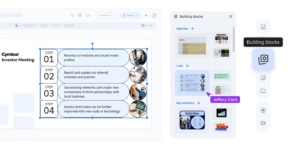DeepMind Introduces Advanced AI Models in Effort to Enhance Robot Utility

Advancements in AI and Robotics
In recent years, the integration of artificial intelligence (AI) in robotics has become a focal point for technology companies. Major players like Google, OpenAI, Meta, and Amazon are actively exploring how to make robots more effective and applicable in various fields. These advancements are capturing widespread attention, particularly due to innovations unveiled by Google DeepMind.
New Developments from Google DeepMind
AI Models Designed for Robotics
Google DeepMind recently introduced a series of advanced AI models aimed at enhancing robotic capabilities. This initiative is part of a broader effort to make robots more practical and beneficial in everyday tasks. By utilizing sophisticated AI algorithms, these robots can improve their performance and adaptability in physical environments.
- Robust AI Models: The newly unveiled models are built to learn and adapt quickly, allowing robots to operate more seamlessly in dynamic scenarios.
- Focus on Usability: This technology aims to make robots not just more intelligent but also user-friendly, extending their applicability into homes, workplaces, and other social settings.
Robotics Breakthroughs
One of the notable achievements highlighted by DeepMind includes a robot successfully executing complex physical tasks, such as slam-dunking a basketball. This demonstrates the potential for AI robots to perform skilled sports actions, reflecting their ability to understand motion dynamics and grasp physical challenges.
Applications of AI in Robotics
Expanding the Physical World Interaction
Gemini Robotics, a branch of Google DeepMind, is specifically focused on bringing AI capabilities into the physical realm. This effort signifies a shift towards practical implementations of AI in everyday life.
- Task Automation: AI robots can automate repetitive tasks in industrial settings, increasing efficiency and safety.
- Home Assistance: Robots powered by AI can assist in household chores, making life easier for many families.
- Healthcare Applications: In medical environments, AI robots can provide support in patient care, contributing to better medical outcomes.
Competitive Landscape in Robotics
Several tech giants are investing heavily in robotics. This competition is driving innovation and propelling advancements in robotics further. Each company is leveraging its own strengths to create more intelligent and helpful robotic systems:
- OpenAI: Focused on developing general-purpose AI that can learn and interact naturally with humans.
- Meta: Emphasizing the integration of AI in social applications and community support through robotic technologies.
- Amazon: Looking to enhance delivery and logistics through automation and AI-driven robots.
Insights into Robotics Development
The rise of AI in robotics is paved with expectations and some challenges. Both engineers and researchers are dedicated to overcoming hurdles such as physical limitations, human-robot interaction, and ethical concerns. Companies are keen to ensure robots can operate safely alongside humans, understanding surroundings, and making informed decisions.
Key Challenges Addressed
- Safety: Ensuring robots can navigate environments without risking accidents.
- Adaptability: Enabling robots to function across different settings without extensive retraining.
- Ethics: Addressing concerns about autonomy and decision-making in critical situations.
The Future of AI Robotics
As developments continue, the interaction between AI and robotics is expected to deepen, ultimately leading to more sophisticated autonomous systems. Research and technological innovation will likely lead the way for robots to become integral parts of everyday life, contributing to various sectors from manufacturing to personal assistance.
These advancements are paving the path for a future where AI-driven robots are commonplace, making human life easier and safer. With ongoing investments and research, the capabilities of these machines could exceed current expectations, further bridging the gap between technology and daily life.






